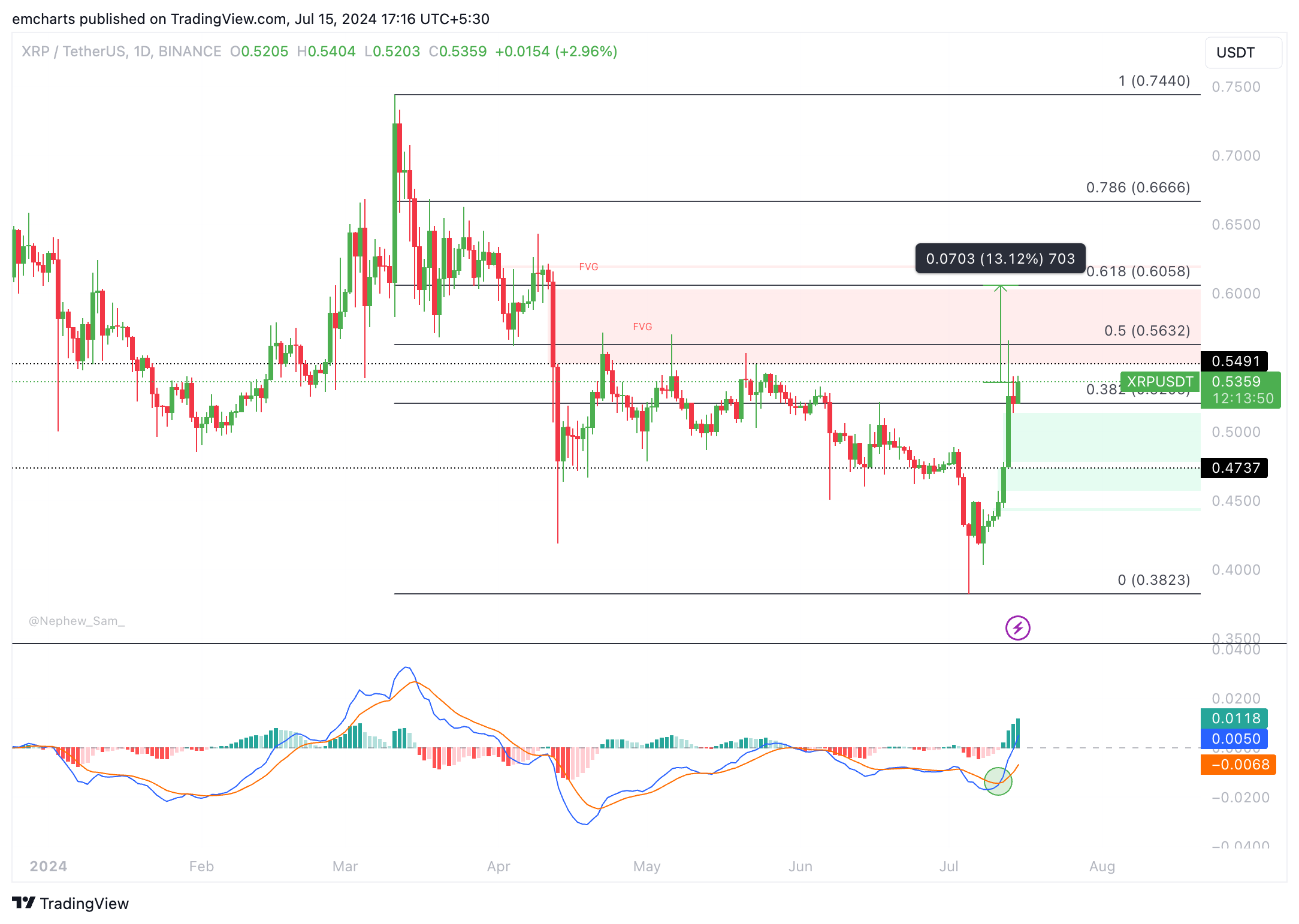Ripple whales buy 300 million XRP over the weekend, altcoin extends gains by 3%
- Ripple whales holding between 10 million and 100 million XRP tokens have accumulated the altcoin in the past two days.
- XRP whales added 300 million tokens between July 12 and 15, per Santiment data.
- XRP extended gains by nearly 3% on Monday, trades above $0.5300.
Ripple (XRP) noted the highest weekly gains in 2024 over the weekend as XRP holders celebrated the one-year anniversary of Judge Torres’ ruling in the SEC vs. Ripple lawsuit. XRP rallied to a peak of $0.5661 on Saturday, July 13.
The altcoin extended gains by nearly 3% on Monday and trades at $0.5333 at the time of writing.
Daily digest market movers: Ripple whales buy 300 million XRP in two days
- Data from on-chain intelligence tracker Santiment shows that Ripple’s large wallet investors added 300 million XRP to their holdings between July 12 and 15.
- The accumulation of the altcoin by whales is typically considered bullish for an asset, therefore, it supports a thesis of further gains in XRP.
- While the cohort of large wallet investors holding between 10 million and 100 million tokens added 300 million XRP, another cohort holding between 100,000 and 1 million XRP accumulated 10 million tokens in the same timeframe.
 [17.04.51, 15 Jul, 2024]-638566441630846036.png)
XRP supply distribution
- XRP army or the traders holding the altcoin celebrated the one-year anniversary of Judge Analisa Torres’ ruling that XRP is not a security in its secondary market sales.
- XRP Army celebrates first anniversary of Judge Torres ruling, XRP rallies 10%
Technical analysis: XRP could extend gains by 13%
XRP trades around $0.5330 on Monday, July 15. XRP Ledger’s native token erased losses from May 26 and sustained above the key psychological support at $0.50.
The momentum indicator, the Moving Average Convergence Divergence (MACD), supports the recent gains and flashes green histogram bars above the neutral line. It is a sign that the underlying momentum in XRP price trend is positive.
XRP could extend gains by another 13% and rally to $0.6058, the 61.8% Fibonacci retracement of the decline from the March 11 top of $0.7440 and the July 5 low of $0.3823.

XRP/USDT daily chart
A daily candlestick close under $0.5205 could invalidate the bullish thesis. XRP could then find support at the July 12 high of $0.4870, the lower boundary of a Fair Value Gap (FVG) in the chart above.
Bitcoin, altcoins, stablecoins FAQs
Bitcoin is the largest cryptocurrency by market capitalization, a virtual currency designed to serve as money. This form of payment cannot be controlled by any one person, group, or entity, which eliminates the need for third-party participation during financial transactions.
Altcoins are any cryptocurrency apart from Bitcoin, but some also regard Ethereum as a non-altcoin because it is from these two cryptocurrencies that forking happens. If this is true, then Litecoin is the first altcoin, forked from the Bitcoin protocol and, therefore, an “improved” version of it.
Stablecoins are cryptocurrencies designed to have a stable price, with their value backed by a reserve of the asset it represents. To achieve this, the value of any one stablecoin is pegged to a commodity or financial instrument, such as the US Dollar (USD), with its supply regulated by an algorithm or demand. The main goal of stablecoins is to provide an on/off-ramp for investors willing to trade and invest in cryptocurrencies. Stablecoins also allow investors to store value since cryptocurrencies, in general, are subject to volatility.
Bitcoin dominance is the ratio of Bitcoin's market capitalization to the total market capitalization of all cryptocurrencies combined. It provides a clear picture of Bitcoin’s interest among investors. A high BTC dominance typically happens before and during a bull run, in which investors resort to investing in relatively stable and high market capitalization cryptocurrency like Bitcoin. A drop in BTC dominance usually means that investors are moving their capital and/or profits to altcoins in a quest for higher returns, which usually triggers an explosion of altcoin rallies

